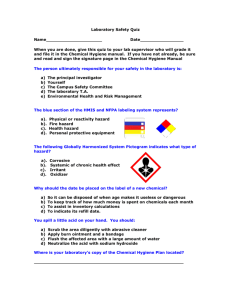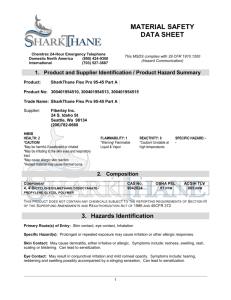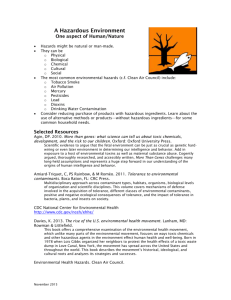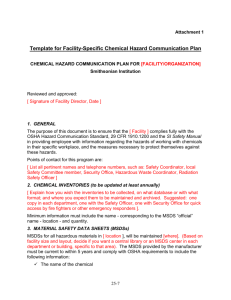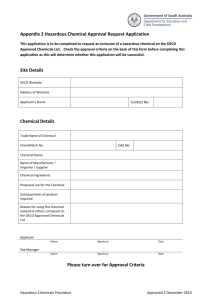doc
advertisement
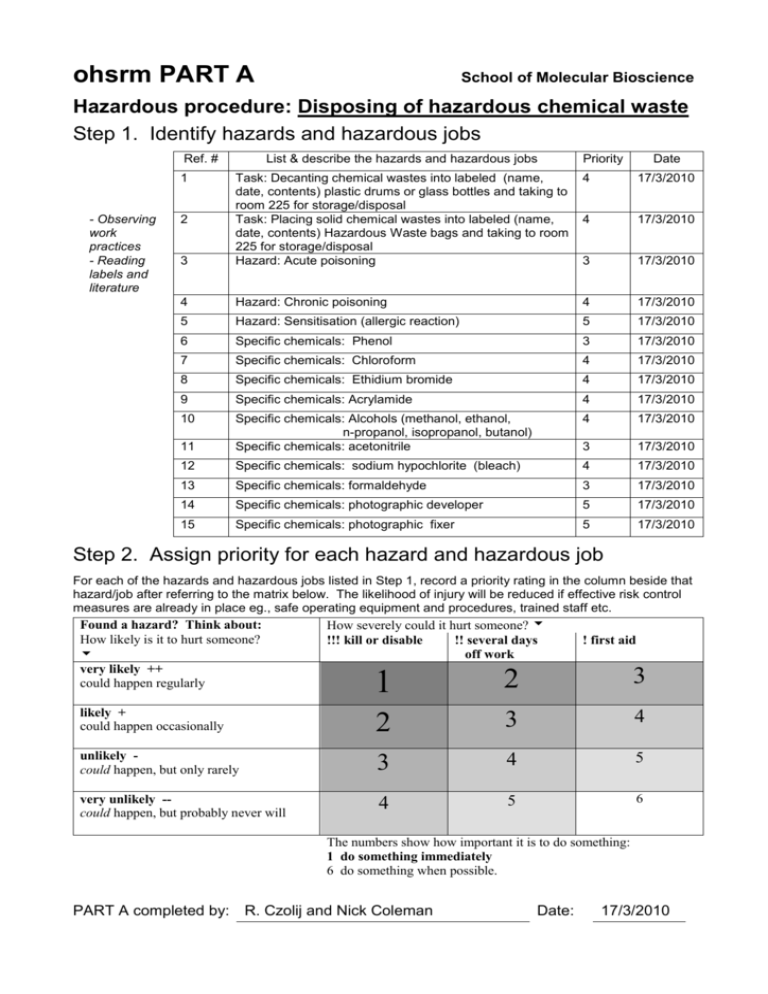
ohsrm PART A School of Molecular Bioscience Hazardous procedure: Disposing of hazardous chemical waste Step 1. Identify hazards and hazardous jobs Ref. # 1 - Observing work practices - Reading labels and literature List & describe the hazards and hazardous jobs Priority Date 4 17/3/2010 4 17/3/2010 3 Task: Decanting chemical wastes into labeled (name, date, contents) plastic drums or glass bottles and taking to room 225 for storage/disposal Task: Placing solid chemical wastes into labeled (name, date, contents) Hazardous Waste bags and taking to room 225 for storage/disposal Hazard: Acute poisoning 3 17/3/2010 4 Hazard: Chronic poisoning 4 17/3/2010 5 Hazard: Sensitisation (allergic reaction) 5 17/3/2010 6 Specific chemicals: Phenol 3 17/3/2010 7 Specific chemicals: Chloroform 4 17/3/2010 8 Specific chemicals: Ethidium bromide 4 17/3/2010 9 Specific chemicals: Acrylamide 4 17/3/2010 10 4 17/3/2010 11 Specific chemicals: Alcohols (methanol, ethanol, n-propanol, isopropanol, butanol) Specific chemicals: acetonitrile 3 17/3/2010 12 Specific chemicals: sodium hypochlorite (bleach) 4 17/3/2010 13 Specific chemicals: formaldehyde 3 17/3/2010 14 Specific chemicals: photographic developer 5 17/3/2010 15 Specific chemicals: photographic fixer 5 17/3/2010 2 Step 2. Assign priority for each hazard and hazardous job For each of the hazards and hazardous jobs listed in Step 1, record a priority rating in the column beside that hazard/job after referring to the matrix below. The likelihood of injury will be reduced if effective risk control measures are already in place eg., safe operating equipment and procedures, trained staff etc. Found a hazard? Think about: How likely is it to hurt someone? very likely ++ could happen regularly How severely could it hurt someone? !!! kill or disable !! several days off work ! first aid 1 2 3 likely + could happen occasionally 2 3 4 unlikely could happen, but only rarely 3 4 5 very unlikely -could happen, but probably never will 4 5 6 The numbers show how important it is to do something: 1 do something immediately 6 do something when possible. PART A completed by: R. Czolij and Nick Coleman Date: 17/3/2010

